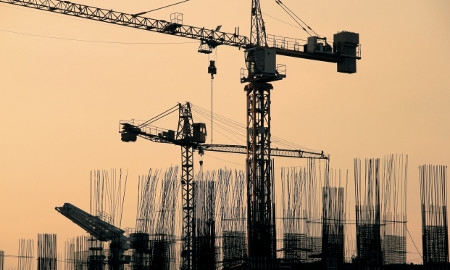Construction industry experts BCI Asia hailed 2013 as the year that would see the “birth of new construction” in the Philippines, predicting that the value of the sector would climb to around $27.7 billion, a staggering 264% increase on 2012.
The boom is mainly due to a surge in infrastructure and real estate projects. For a country that has been criticized for a lack of public expenditure on infrastructure, the Aquino administration has committed $11 billion this year on ports, airports, roads and bridges. The government is planning to dig even deeper into the coffers over the coming years, with infrastructure investment set to jump to almost $17 billion by 2015.
The dense collection of cranes that dominate Manila’s skyline is evidence of the country’s thriving real estate sector. New office and residential buildings, shopping malls and hotels are sprouting up all over the capital.
Socio-economic development has caused skyrocketing demand for housing in recent years. A surge in bank lending to the Philippines’ real estate sector is indicative of the market’s potential in a favorable environment of low interest rates and strong economic growth. Demand for housing is not only coming from citizens, but also from expatriates that have come to work in the bustling country.
| “With our prudent utilization of taxpayer money as well as improved procurement processes and open, transparent, competitive bidding as of Dec. 31, we were able to save over P12 billion which can be utilized for other priority development projects” |
The knock on effect of this construction boom on the manufacturing sector has been strongly felt by the country’s cement manufacturers. The Cement Manufacturers’ Association of the Philippines says that demand for cement grew 18% in 2012 and is expected to grow 10% this year.
Manufacturing overall is going through somewhat of a “renaissance” in the Philippines, according to renowned Filipino economist, writer and thinker, Bernardo Villegas, and will see “an avalanche of investment this year,” with revenues forecasted to reach $1 billion.
A country that has grown out of its agricultural routes, the 7,000-island nation is home to the world’s top car manufacturers, such as Mercedes-Benz, BMW, Volvo, Ford, Toyota, Mitsubishi, Nissan, and Toyota. More evidence of the Filipinos’ growing spending power and affluence came in 2010, when sales of vehicles hit a record high of 162,000.
Electronics manufacturing also plays a large part in the industrial sector, which constitutes around 31.3% of GDP. The Philippines plays host to top multinational electronic firms like Intel and Toshiba and can also boast of supplying 10% of the world’s semiconductor manufacturing services and produce 50% of world’s HD televisions.
Filipino exports are forecasted to rise 10% to 17% this year, thanks mainly to a surge in outside demand for manufactured goods, with electronics – making up of 40% export revenues – due to climb around 10%, while machinery and transport equipment exports will grow 12%.

0 COMMENTS